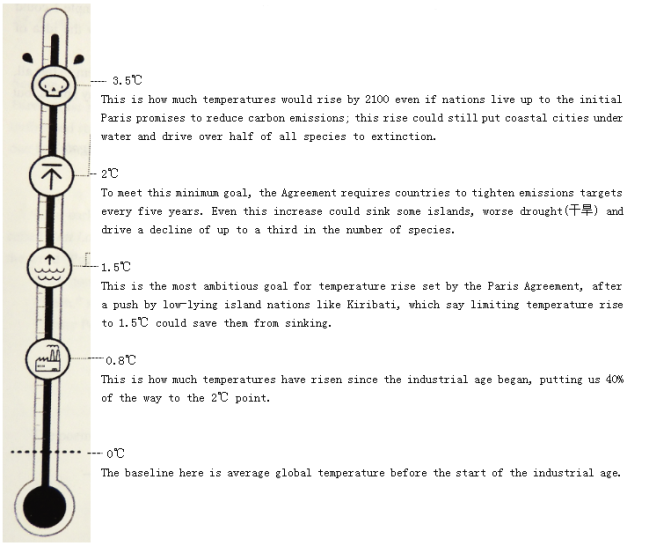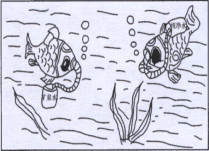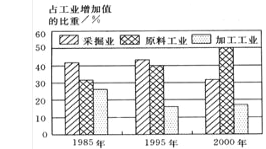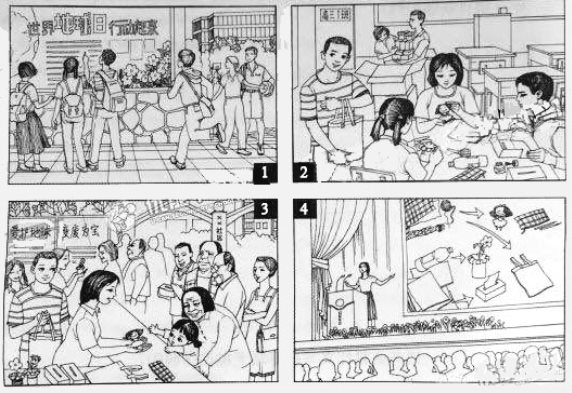题目内容
【题目】阅读理解。

【1】It can be concluded from paragraph 1 that _______.
A. the problem of global warming will have been quite solved by 2020
B. gas emissions have been effectively reduced in developed countries
C. the Paris Agreements is more influential than the Kyoto Protocol
D. humans have made continuous efforts to slow down global warming
【2】If nations could only keep the initial promises of the Paris Agreement, what would happen by the year 2100?
A. The human population would increase by one third.
B. Little over 50% of all species would still exist.
C. Nations would not need to tighten their emissions targets.
D. The Agreement’s minimum goal would not be reached.
【3】If those island nations not far above sea level are to survive, the maximum temperature rise, since the start of the industrial age, should be_______.
A. 0.8℃ B. 1.5℃
C. 2℃ D. 3.5℃
【答案】
【1】D
【2】D
【3】B
【解析】
试题分析:本文介绍了人们一直努力减少温室气体的排放,并设立了到2100年我们应该达成的目标以及达成目标要符合的条件。
【1】D 推理判断题。根据文章第一段三至六句“Since then, many scientists have thought that our actions do make a difference. In 1997, the Kyoto ......stuck by nearly 200 countries, also aims to limit global warming.”可知自从20世纪早期开始人类就一直在努力减少温室气体的排放,希望能减缓全球变暖的趋势。故D项正确。
【2】D 推理判断题。根据文章第二段This is how much temperatures would rise by 2100 even if nations live up to the initial Paris promises to reduce carbon emissions;可知如果各国的气体排放能够符合巴黎协议的要求,到2100年气温会比现在高三度。而根据第三段To meet this minimum goal可知最小的目标是上升两度。也就是说即使各国的气体排放能够符合巴黎协议的要求,也达不到最小的目标。故D正确。
【3】B 细节理解题。根据第四段1.5℃This is the most ambitious goal for temperature rise set by the Paris Agreement, after a push by low-lying island nations like Kiribati, which say limiting temperature rise to 1.5℃ could save them from sinking.可知对于那些低海拔的国家来说温度上升不超过1.5度,就可以避免他们被淹没。故B正确。





